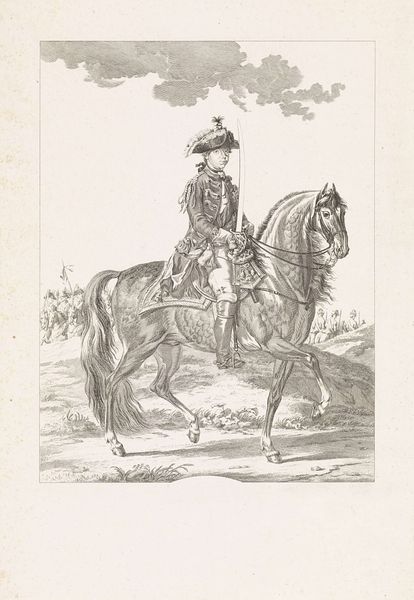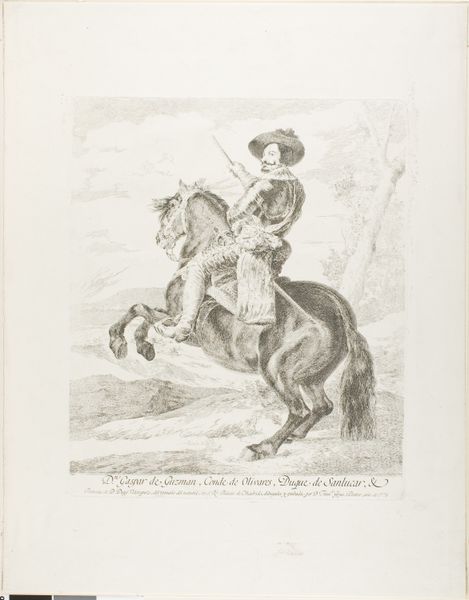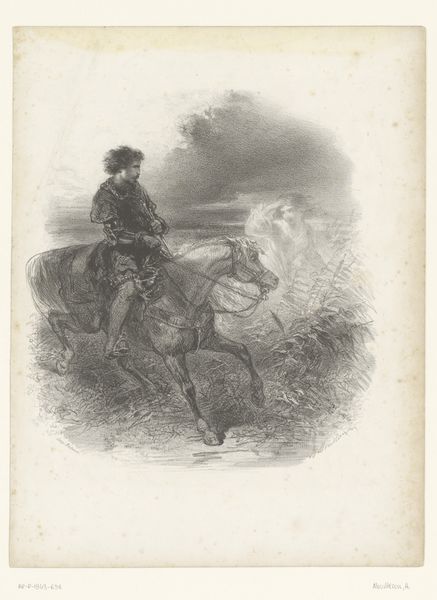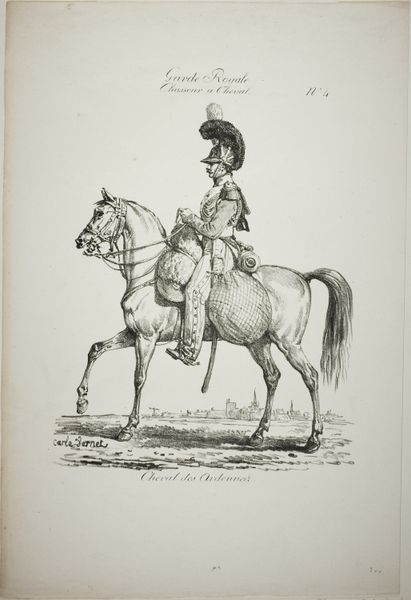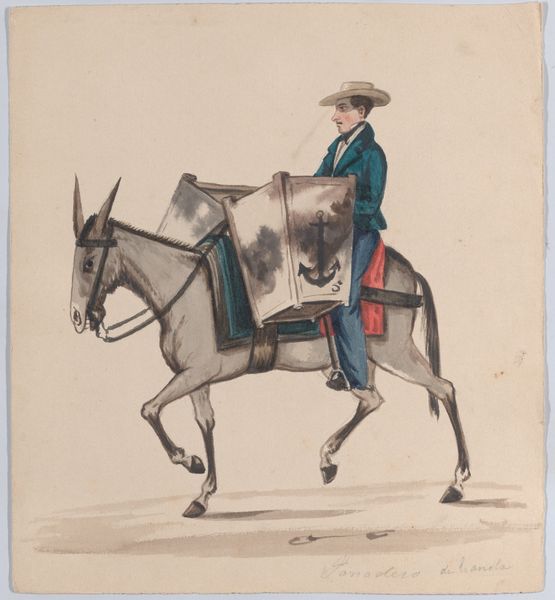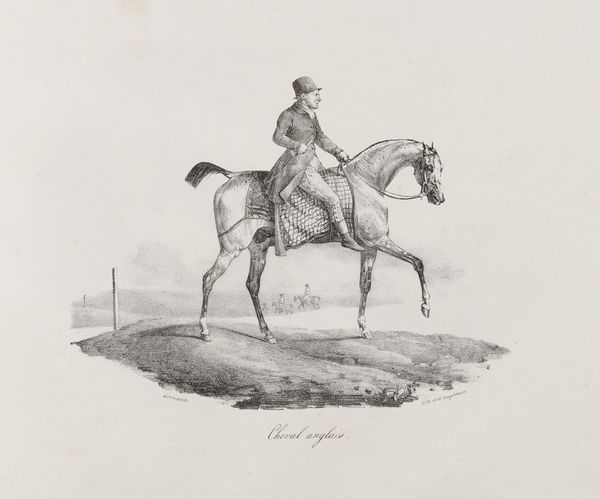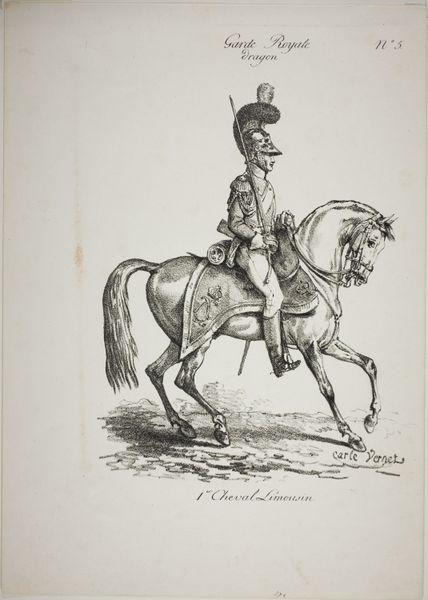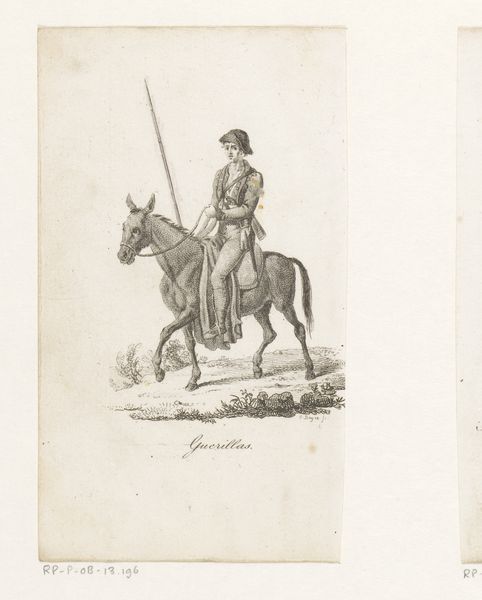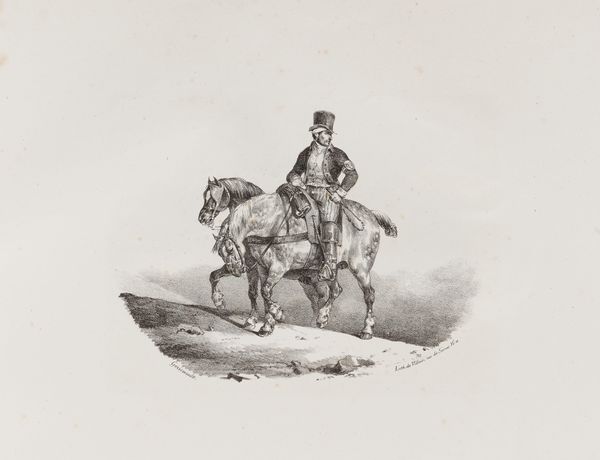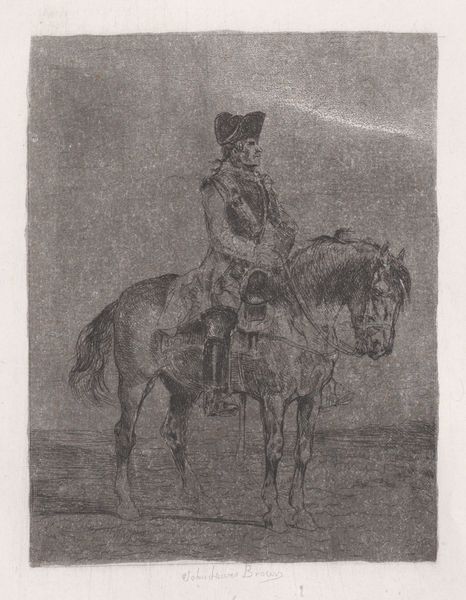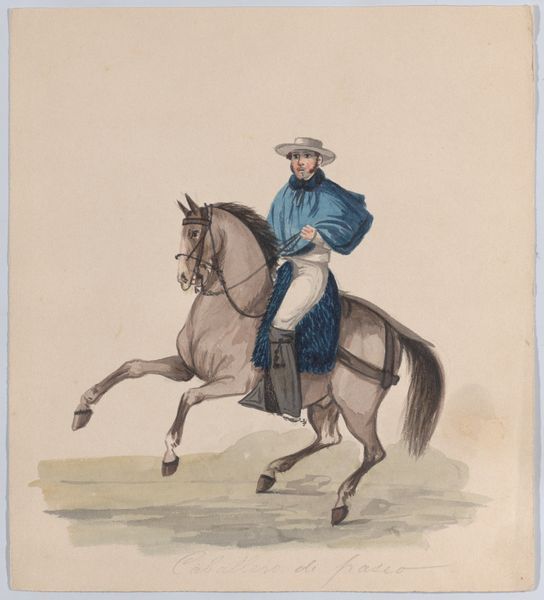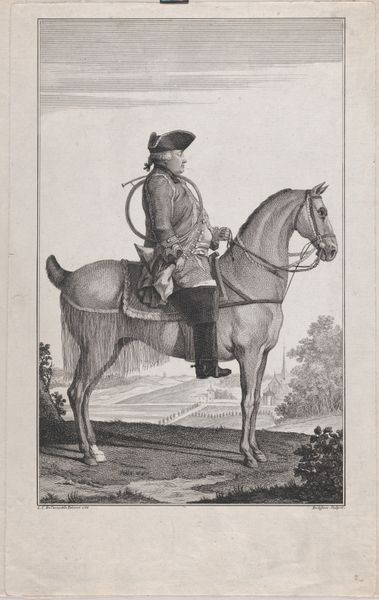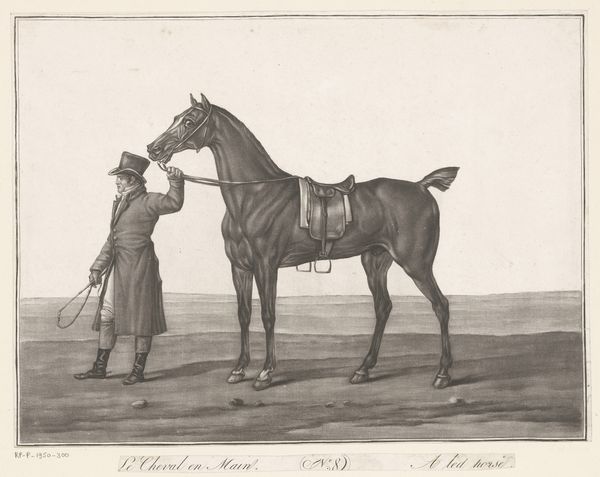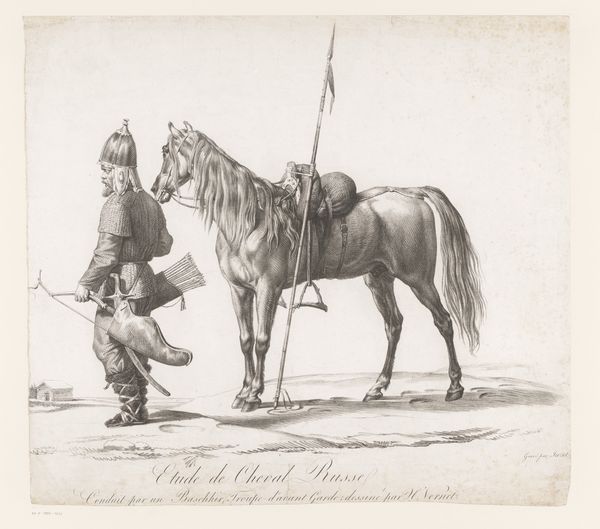
Dimensions: 105 mm (height) x 86 mm (width) (bladmaal)
Editor: We’re looking at Carl Peter Theodor Rothweiler's "Rytter i middelalderlig dragt," or "Rider in Medieval Costume," made in 1859. It’s a small woodcut print depicting a man on horseback, rendered with very fine lines. There's a strong sense of romanticism, but it also feels a bit… theatrical. What do you see in this piece? Curator: The theatricality you pick up on is interesting! Notice how the artist employs a deliberate, almost staged presentation of the rider. Consider the cultural memory at play here. What symbols of medieval life were circulating in 19th-century Denmark? Editor: Well, based on his clothing and the horse's trappings, I'd say the symbols emphasize chivalry, maybe honor... a sort of romanticized past? Curator: Precisely! And what emotional impact do you think Rothweiler intended to evoke through those carefully chosen symbols? It's not just about historical accuracy, is it? Think about the function of line itself. The consistent parallel lines and shading that are applied throughout create both texture and shadow... almost like an idealized fantasy. Editor: I see what you mean. The consistent lines build up the figures like layers of a dream. The image becomes about the *idea* of the medieval era, rather than a real depiction of it. So it reflects 19th-century desires and projections more than historical fact? Curator: Exactly. Consider the horse; not a war horse, but something almost docile in nature. This reinforces the artist's commentary, making a grand symbolic gesture in a simplified style. In the grand theater of cultural memory, what truths do we choose to emphasize, and what do we leave out? Editor: I hadn't thought of it that way – seeing how the style and symbols intertwine to create a specific feeling about the past, a constructed feeling, not necessarily a true one. I'll definitely be more aware of how symbols are being used from now on. Curator: Indeed. Art becomes a powerful repository for our collective longings and distortions. Looking closer at even seemingly simple choices helps us unravel the stories we tell ourselves about who we are.
Comments
No comments
Be the first to comment and join the conversation on the ultimate creative platform.
